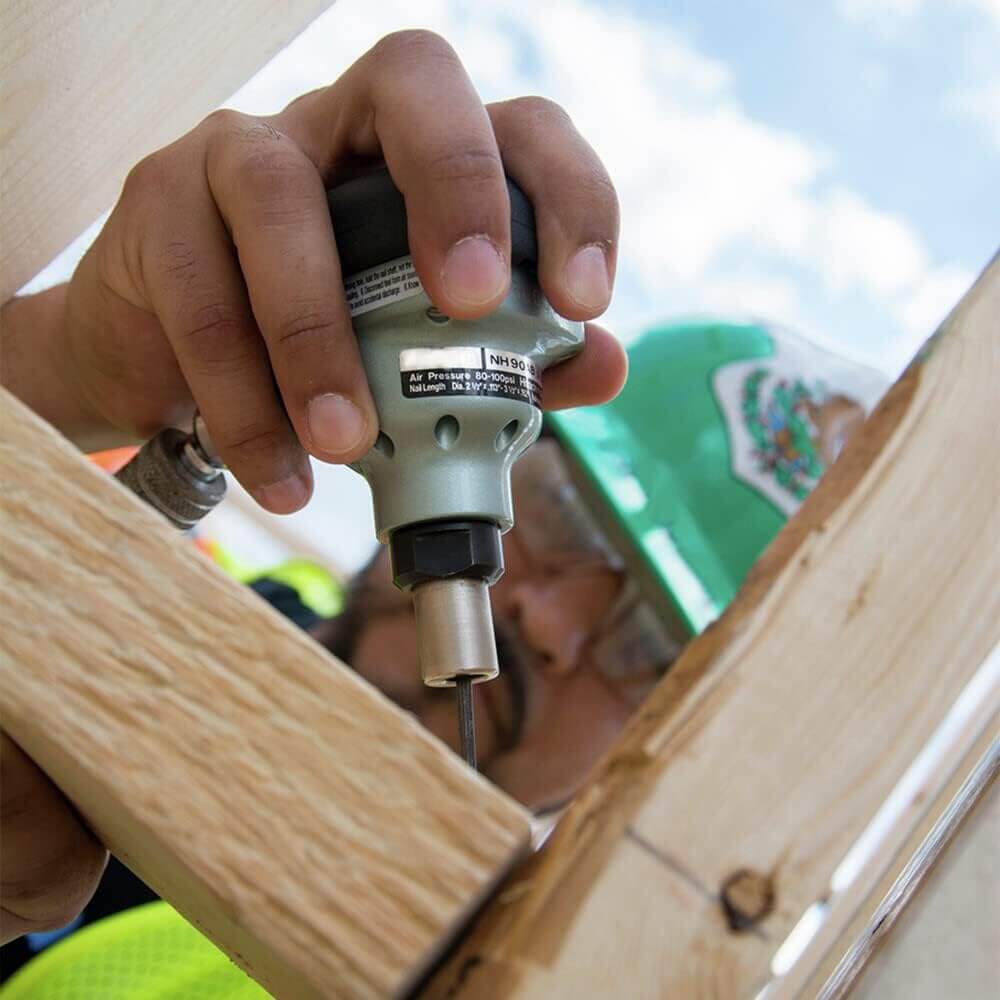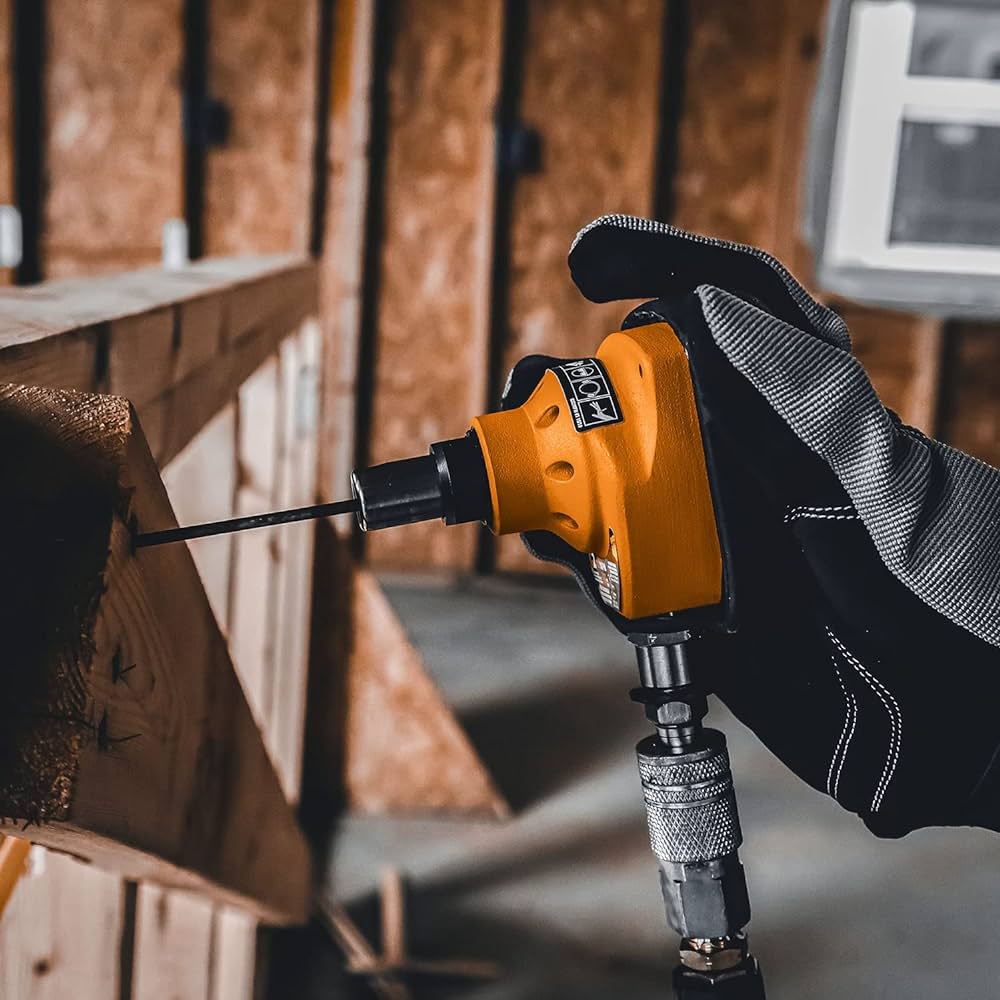If you are looking for an easy-to-use and powerful tool for finishing small projects around the house, a palm nailer may be just what you need. It’s very similar to a pneumatic nail gun but with a few key differences.
These tools are ideal for any DIY projects that require precision. They are designed to drive nails quickly and accurately without the use of a compressor or air hose.
In this article, we’ll discuss everything you need to know about palm nailers, including how they work and what you should look for when choosing one. So if you are planning to get a palm nailer, this article is for you!
What is a Palm Nailer?

As you can guess by the name, a palm nailer is a type of fastening tool that fits into the palm of your hand. It works by striking a nail head and sinking it into wood or other material, much like a hammer and nails.
The main difference between a regular hammer and a palm nailer is that the latter uses an internal mechanism to hit the nail faster than you could with your own two hands.
This approach not only makes the job easier and faster but also ensures greater accuracy, as you drive the nail into the surface exactly where you want it.
palm nailers are extremely lightweight and designed to fit appropriately in your hand. This diminishes fatigue from extended overhead nailing or using heavy coil roofing nailers.
Thanks to their smaller size and lightweight construction, you can use palm nailers in tight spaces like furniture or door frames. These nailers are easy to maneuver and cheaper than other types of nailers such as brad, finish, and framing nailers.
Palm nailers are fairly simple tools with fewer moving parts than framing or finish nailers. As long as you keep them properly lubricated and store them properly, they necessitate little maintenance.
How Does a Palm Nailer Work?
A palm nailer is different from other nailers in that it uses a mechanism to strike the nail instead of air pressure like some other nailers.
This internal mechanism consists of several parts that are responsible for its operation. Inside the handle, there is a spring-loaded plunger and anvil assembly that is pushed against the force of the spring when you press the trigger.
When you release the trigger, the spring forces the plunger to move quickly and strike the nail, driving it down into the material. This process is repeated each time you press and release the trigger until your desired depth is reached.
It is a simple mechanism that mimics a regular hammer and nail but with more accuracy and speed. In addition to its internal mechanism, you can use a palm nailer with air pressure for even greater power and accuracy.
How to Use a Palm Nailer?
Just like any other nailer, a palm nailer uses the same mechanism to drive nails into the material but with a few key differences.
Before you start using your palm nailer, it is important to read the instructions that come with the tool and understand how it works. Make sure you have all the necessary safety equipment in place before beginning your project.
Here’s how to use a palm nailer:
Safety first
Make sure that you are wearing proper safety gear such as gloves and goggles before you start working. Palm nailers are not that powerful, but they can still cause damage if you are not careful.
Choose the right nails
It is important to use the correct size and type of fasteners for your project. The wrong nail can cause damage to the material or even jam the nailer itself.
Load the nail
Load the nail into the palm nailer by pressing it against the nailer’s nose and sliding it down until it clicks into place.
Position the nail
Place your thumb on the trigger and position the head of the fastener where you want to drive it. Make sure that you are working in a steady, comfortable position.
Press the trigger
Gently press the trigger and feel it depress as the nail is driven into the material. Release the trigger after each shot for the best results.
Repeat
Once you reach your ideal depth, you can repeat the process until your project is complete.
What is a Palm Nailer Used For?
A palm nailer is a great tool for any DIY enthusiast or professional contractor who needs to drive nails into tight spaces. Thanks to their smaller size and lightweight construction, these tools can fit into areas that standard hammers and nails cannot access.
Palm nailers are commonly used for projects such as
- Installing door frames
- Furniture assembly
- Making small repairs
- Installing trim and molding
- Building birdhouses
- Embellishing crafts
In simple words, you can complete jobs faster and with more accuracy using a palm nailer instead of regular hammers and nails. Whether it’s a professional job or a DIY home improvement project, a palm nailer can save you time and energy.
Let’s take a look at some of the pros and cons of palm nailers so you can decide if this tool is right for you.
Pros
- Lightweight and easy to use
- Can access tight spaces that other nailers can’t
- Faster and more accurate than using a hammer and nails
- Versatile enough to be used in a variety of applications
- Saves time and energy
- Cheaper than other nailers ($30-$50)
Cons
- You can only work with one nail at a time
- Not as powerful as other nail guns
FAQs
What kind of nails to use with a palm nailer?
Palm nailers are mostly used with large framing nails, joist hanger nails, or other bulk nails.
Can you remove nails with a palm nailer?
No, you cannot. Palm nailers are designed to drive nails and not remove them. To remove a nail you need to use a claw hammer or another prying tool.
Can You Use Finishing nails in palm nailers?
Yes, you can use finishing nails in a palm nailer – however, it is important to check the size and type of fastener that the tool can handle before purchasing. Some palm nailers are not suitable for very small or thinner nails.
Can you use a palm nailer for roofing?
Yes, you can! Roofing requires a lot of fastening and palm nailers are perfect for the job. They can easily access hard-to-reach areas, making them ideal for roofs. Just make sure to use the correct size and type of nails for this application.
